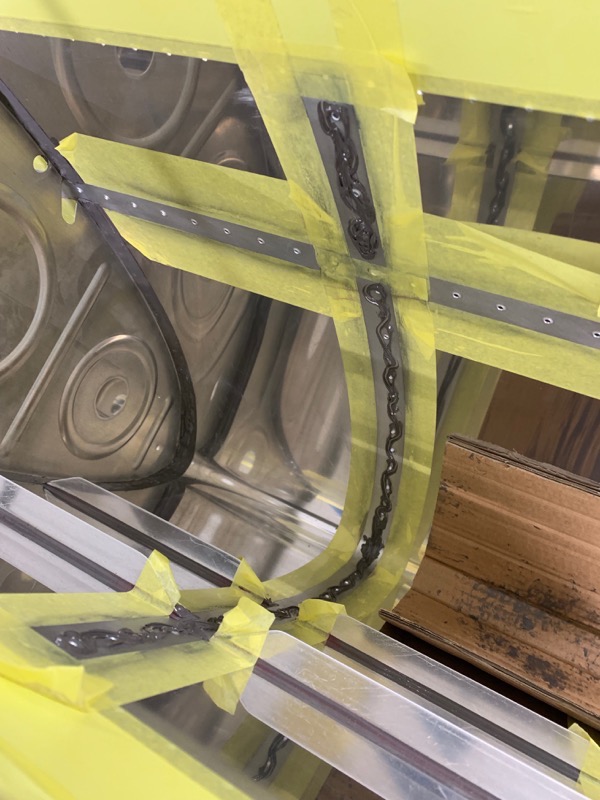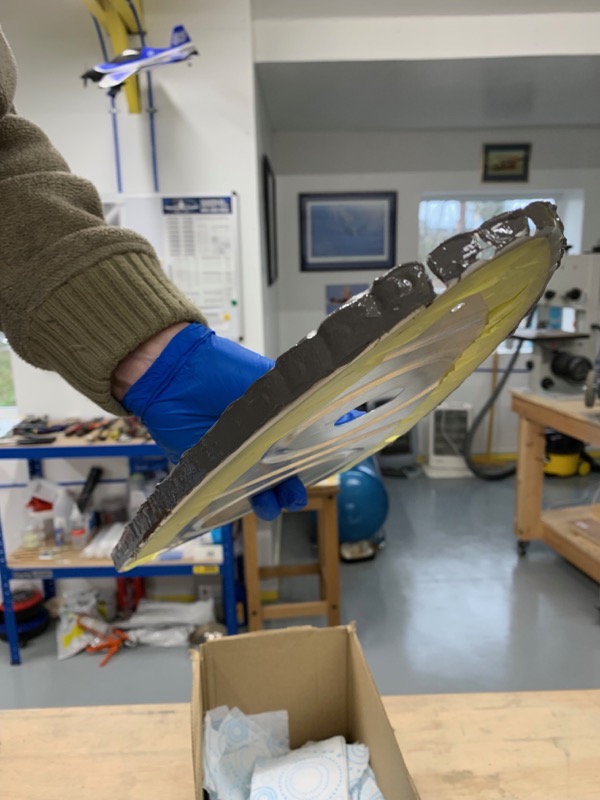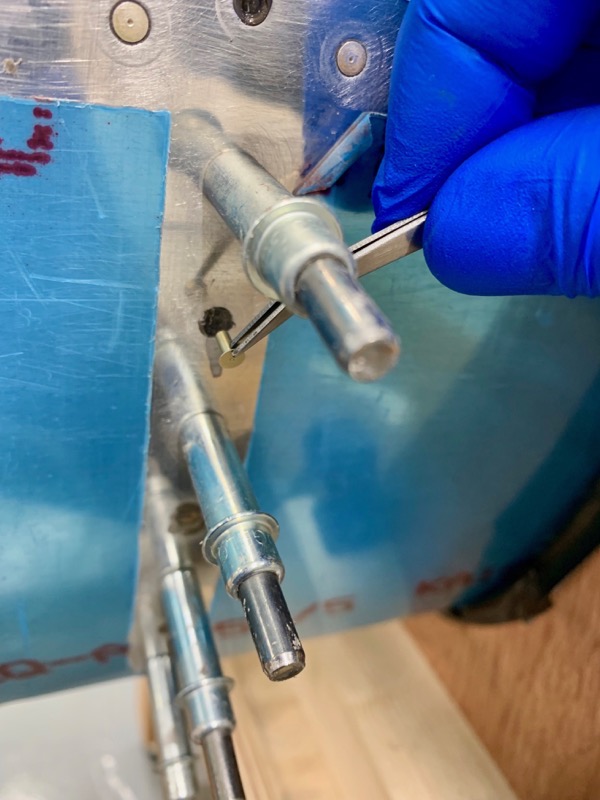18-05 Yet Again! Right Tank Progress
Right Tank Ribs
Well, here we are trying to remain cheerful in the face of Proseal adversity! Tim is holding a pot of MEK, and I’m keeping well out of it : )
As long as you get completely organised, it’s not that bad. It just takes a long time. Each rib is taking us just over an hour, and uses about 60g of Proseal … this is covering the flanges completely, which some people don’t do. Oh well, in for a penny, in for a pound. The 500ml tins of Proseal are costing £60 : ( If it means no leaks it’ll be worth it.
The pneumatic sealant gun is absolutely brilliant. I would not have liked to build the tanks without it.
Sealant smoothed out on the rib flange with a lollipop stick.
The rivets have been soaked in MEK and then dried. So Coral’s tweezers are very handy for placing the rivets in the holes.
Here’s the end rib. I squeezed the rivets on the left tank, but for some reason found it harder on this side to squeeze a nice shop head. I think it may have been because the rivet I tried wasn’t perfectly aligned in the hole. Anyway, we ended up setting them with the gun with a good result.

































































2 comments on 18-05 Yet Again! Right Tank Progress
Since the ribs are serving only as baffles in regard to the fuel (ignoring the structural aspect they fulfill), is there any reason to cover the entire flange with Proseal? The only leak path is around the rivets, correct? Or a I missing something?
Good to see that you are still smiling.
There is no doubt that you can get away with a lot less Proseal than I’ve applied. Lots of people just seal the rivet shop heads. But some also do what I’ve done, ie flanges as well. The reason is that it is less likely that little blobs of sealant on each shop head will detach. Also, if the edges/flanges of the rib are sealed, then it’s less likely that fuel will get between the rib flange and skin,further reducing the chance of a leak via a rivet. For the sake of more sealant I decided to seal the flanges … I just don’t want to deal with a leak! But the proof will come later … fingers crossed, but I feel I’ve done all I can so far.